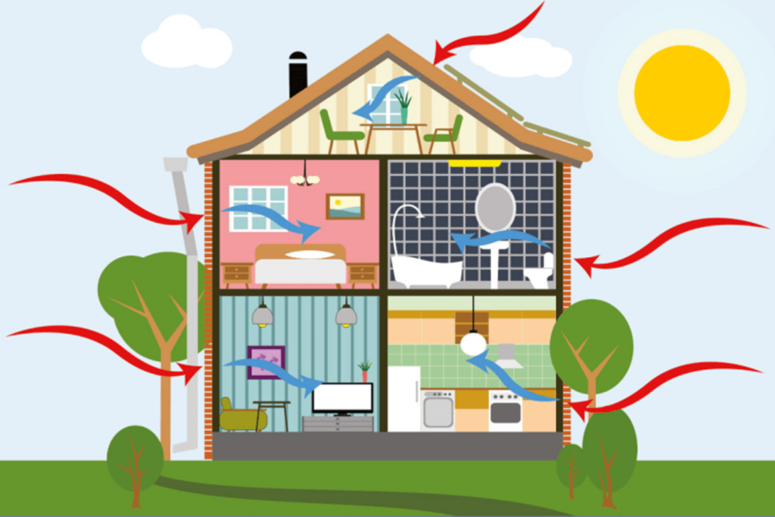
Thermal Envelope
Your home’s “thermal envelope” refers to the air ventilation and leakage through its floors, walls, ceilings, windows and doors. Both natural and mechanical air pressure affects the rate of seepage throughout your home. A poorly structured thermal envelope can lead to costly energy use and consumption.
And the “leakier” a home or dwelling is, the more energy it takes to condition it! A Blower Door Test is one of the most accredited ways of getting an accurate HERS Rating. The HERS Rating will show, from 1-100, how efficient the home is at ventilating. This data can provide valuable information to help improve and optimize the home’s ventilation system. Furthermore, optimizing the HVAC system and Thermal Envelope will Improve IAQ (Indoor Air Quality) by reducing the amount of airborne contaminants and by stabilizing the moisture level in the air. This reduces moisture in the air and prevents mold growth!
Mechanical Ventilation
In some cases, a dwelling is not ventilating enough. If your home changes its air out less than 3x per hour, then it must be mechanically ventilated. Homes that do not ventilate 3x hourly maintain a higher moisture level which can lead to mold growth and indoor air quality issues. Properly working HVAC systems clean and purify the air, hence the name “conditioner”! Exchanging air 3x hourly ensures that the home’s air is optimally safe and healthy to breathe. When a Blower Door Test shows too little ventilation, whole-house ventilation systems are installed to mechanically exchange indoor air with outdoor air to bring the dwelling into compliance.
